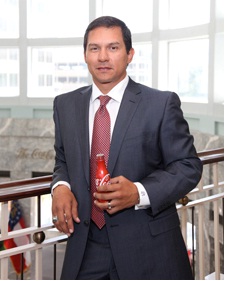 As the CIO of the Coca-Cola’s Bottling Investments Group, Javier Polit has strong ideas about how to ensure that IT is in sync with the company’s business needs.
As the CIO of the Coca-Cola’s Bottling Investments Group, Javier Polit has strong ideas about how to ensure that IT is in sync with the company’s business needs.
Polit brings a particularly aggressive style of IT leadership to one of the most globally recognised U.S. companies.
He has mandated that business unit general managers bring IT leaders into the broader decision-making process. In other words, he wants IT to have a proverbial seat at the table.
IT has to understand business needs and strategies to be effective, but “today I don’t think that’s enough,” Polit told attendees of Computerworld’s Premier 100 IT Leaders conference here. What he wants is for the IT leaders in his group “to be true peers” of their business colleagues.
Coke’s Bottling Investments Group has to manage some 27 bottlers and other facilities internationally. Those operations deliver some 300 billion cases of soft drinks a year and serve more than 5 million stores.
The IT group needs “to be looked on as somebody who understands the business,” Polit said. To help accomplish this, he requires traveling IT team members to spend four to six hours “in the market,” in whatever country they are in, to see how production plants work and how products are sold in various international locations.
Polit expects his IT team members to become involved in all aspects of a business. In one case, that meant getting on a motorcycle to deliver supplies down a street too narrow for a car. “We need to make sure we understand those things,” said Polit. That way, he explained, an IT professional can “be really viewed as what I call a business engineer.”
The IT staff is building systems for vertical disciplines in the business, such as finance, human resources and other areas. That means that his staff understands the various business processes “more so than a lot of other individuals,” he said.
Polit also pushes back on the commercial leaders. For instance, if a business unit is seeking additional capability in an ERP system, IT will check on how much of the current capability is being used. It might discover that the business unit is only using 60% of its capability but is asking for $2 million in enhancements, Polit said. That information is then shared with the CEO, and “once you get that out, the answer is immediate: We’re not going to do that,” he said.
To help monitor utilisation, the group creates a standard and metrics and then presents that data on a scorecard. You have to push back, Polit said, in order to make the right decisions.
How global changes affect the business is a leading concern for Polit. Speaking in broad terms, he said that 700 million people will move from desktops to some sort of handheld device over the next five years. IT departments, therefore, are going to have to ensure that they deliver the “right level” of performance to all devices.
More changes are on the way. The latest generation basically grew up texting — even children under 8 years of age are texting these days, he said, adding, “I don’t think that generation is going to be sending email.”
Another looming challenge is the rapid urbanisation of Asia. One goal is “to make sure our businesses are properly positioned to capture some of this market share,” he said.
Finding talented labor is also a concern. “We really do think there is going to be an issue in the near future in regards to having good talent pools in North America and Europe,” Polit said. “We think they are shifting to Asia.”
One IT manager who heard Polit speak said a need for more IT talent in the U.S. is something that keeps turning up as an issue. “I’m hearing about this problem over and over again,” said the manager, who asked not to be identified. “What can we do about it?”





